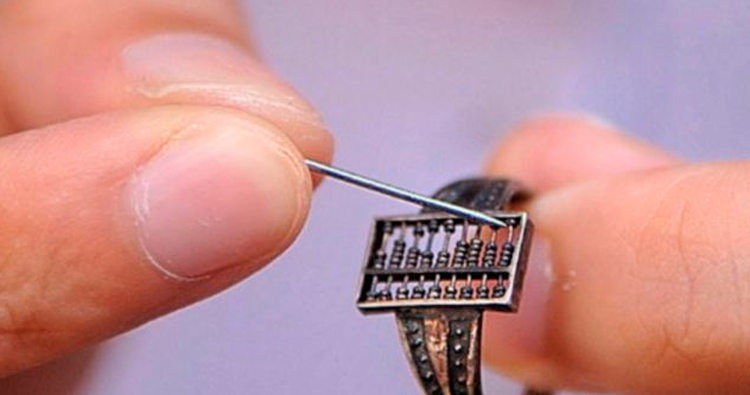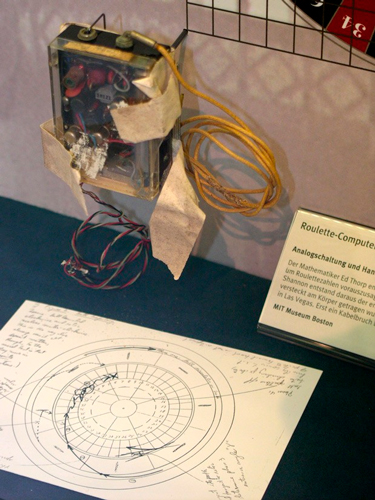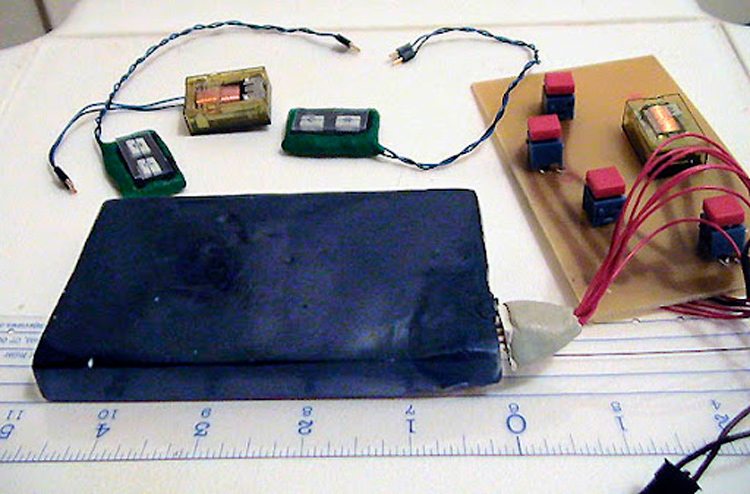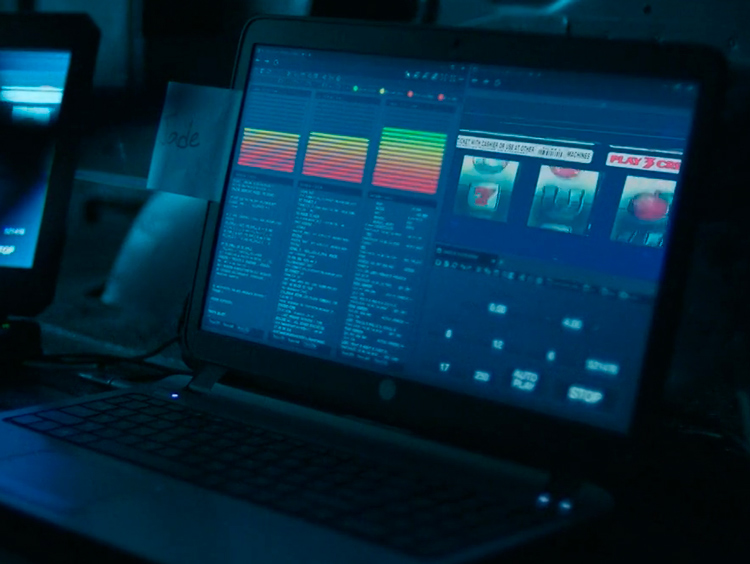

Most gambling games are based on math. Thus, the probability of all outcomes in blackjack or poker can be determined in advance. However, for this players will have to calculate dozens and even hundreds of events in a couple of seconds. A large number of unknown variables complicates the task, providing the casino with an advantage. In the second half of the XX century, the situation changed in favor of players – there are new strategies and computers.
- The first mechanical portable “computer”
- Roulette – solved equation
- Slots hacking
- Computer prediction
The first mechanical portable “computer”
In the XVII century on the territory of China began to use an unusual ring with accounts. This invention was mainly used by traders, but it was also useful in other spheres of life.
The classical accounts themselves appeared several centuries earlier. Presumably, they were invented by the Chinese mathematician Cheng Dawei.
Roulette – solved equation
Edward Thorps Among gambling enthusiasts is known for playing blackjack. The author of the book “Beat the Dealer” always wanted to prove the possibility of consistently winning in casinos. He not only started using card counting, but also developed the first portable computer to predict roulette results. The idea of creating an unusual mechanism appeared to Thorpe at the age of 13 – his school teacher claimed that it was impossible to beat the casino. After 30 years, the genius managed to prove the opposite.
In 1960, the gifted accountant met Claude Shannon, another professor at the Massachusetts Institute of Technology. At their first meeting, the scientists discussed the possibility of using math to win at roulette.
The professors spent about eight months in the basement lab. In the tiny room could be found a lot of gadgets worth several tens of thousands of dollars. When the first prototype of the computer appeared, the inventors immediately moved on to tests. For this purpose, they had to order a standard roulette wheel costing $1500.
Experiments showed that the computer gives the player an advantage in roulette up to 44%
Experiments showed that the computer gives the player an advantage in roulette up to 44%.
The main part of the device was no bigger than a pack of cigarettes. Together with 12 transistors, the device measured the ball’s spin time and determined where it would end up. Several wires went down – the inventors hid a switch in the shoe. With his feet, the player had to activate the device and start a time report when the ball passed a reference point.
One wire was intended for an earpiece. When the computer made all the necessary calculations, it beeped. A total of 8 melodies were programmed, which corresponded to the roulette octants. After successful tests, Thorpe, along with Shannon, tested the device in a Las Vegas casino.
In roulette, the ball is triggered before betting stops
In roulette, the ball starts before the betting stops.
Each partner played a different role. The first put on a computer, approached the roulette wheel, but did not bet. He recorded the results and pretended to be a system player. In the 1960s, many visitors did something similar – the casino turned a blind eye to it, because in most cases, tracking roulette numbers did not give much advantage.
The second partner would put on a receiver and sit down at the table. Through the earpiece, the first called him the exact number to bet. Most often the role of the second player was performed by Thorpe. At the first visit to the casino professors began with bets of $0.1. Pretty soon a huge stack of chips was formed at the table, and the players began to attract the attention of others. None of the visitors understood how it was possible to guess numbers so often.

The Achilles’ heel of computer design was the headphones. The inventors had to make the stainless steel wire too thin and color it flesh-colored. They were able to safely disguise the design, but it was very fragile. The headphone wire could break at any moment. The partners had to go back to the room to re-solder everything.
Edward Thorpe earned most of his capital through card counting. He was so good at blackjack that he turned down Shannon’s offer to build a handheld calculator for the game
Edward Thorpe earned most of his capital through card counting. He was so good at blackjack that he turned down Shannon’s offer to build a handheld calculator for the game.
In 1966, Thorpe would partially discuss the computer in his book Beat the Dealer. The companions were afraid that casino security would quickly expose them, so they did not make large bets. Later they gave the laptop computer to the museum at the Massachusetts Institute of Technology, where it is still kept.
Calculator in boots
In the 1970s, card counting strategy in the United States reached national popularity. All experienced players tried to master Thorpe’s approach, but not everyone succeeded. Not only did you have to count quickly and well, but you also had to maintain a high level of concentration for several hours.
In parallel, the casino tried in every possible way to confuse players – offered free alcoholic beverages, interfered with other visitors with ridiculous conversations. There is a huge difference between a long thought process and relaxation in a noisy hall.
Talented mathematicianKeith Taftne was able to maintain concentration for more than 10 minutes and made mistakes when counting cards. But he realized that all computing processes could be entrusted to a computer – all that was left was to figure out how to get it into the casino.
Keith refused to seek help from qualified specialists. He had to immerse himself in the world of computer technology, which was in its infancy. For about 2 years, the mathematician studied manuals and soldered microchips until the first working prototype for counting cards appeared. Its design was quite simple.
| Element | Purpose |
|---|---|
| Processor | Responsible for computing operations |
| Batteries | Energized the device for autonomous operation |
| Buttons | Used to send signals to the processor |
| Wires | Wired from the buttons to the computer itself |
The processor with batteries was fastened on the belt or under the pants, and the input device was hidden in the shoe. The player had only 4 buttons at his disposal. They had to be pressed according to the principle of Morse code – long and short series. After the calculation, the computer began to vibrate differently, helping the player to make a decision. Keith called the first model “George”.

In 1972, the first “field tests” took place at a Reno casino. When Taft reached the door, he felt a severe pain in his legs. His gait began to change noticeably, so the mathematician together with his son had to quickly retreat home.
Taft modernized the device, reducing the input panel – now it did not cause so much discomfort. In 2 weeks with the help of “George” the mathematician earned $4000. Later, the inventor would collaborate with professional accountant Ken Uston. The result of their work together would be “David” – a more advanced model, which had the input buttons located on the belt. The cost of a portable blackjack computer was as high as $10,000.
In 1985, Nevada banned the use of computers for gambling bets
In 1985, Nevada banned the use of computers for gambling bets.
Slots Hack
Casinos have learned how to fight the scorekeepers. The rules of blackjack became so complicated that stable earnings could be forgotten. Card counting continued to help make the right decisions, but the mere increase in decks significantly reduced the advantage of a professional player.
A new threat to the casino were computer geniuses. In theory, a competent programmer can hack a slot machine and provide a large prize. Ron Harris is one of the first successful hackers who earned tens of thousands of dollars on slots.
The future criminal began to be fond of computers in his student years. After graduation, the young specialist received a position in the Nevada Board of Gaming Control. Ron Harris had to check every slot that was going to be installed in Las Vegas.
At that time, most slot machines were equipped with EPROM chips. Data from them could be deleted and re-written. This gave Ron the opportunity to reconfigure the algorithm. He added a few lines to the code. The modified machine guaranteed a jackpot if the player made several bets of different sizes in a certain sequence.
In the 1990s, Ron went even further. He copied the code for the random number generator in Keno. He used it to predict the results of draws based on previous values. When the amount of winnings began to reach $100 thousand, the hacker was caught along with his accomplice. Ron Harris was sentenced to 7 years in prison and included in the blacklist of casino visitors.
The story of the first hacker inspired other programmers to look for vulnerabilities in slot machines.
In the TV series “Ozark,” the main characters videotape the spinning of the reels and transmit the picture to a computer to hack the slot
In the Ozark series, the main characters videotape the spinning reels and transmit the picture to a computer to hack a slot.

Slot manufacturers claim that they have a random number generator in their work. Indeed, the average player can not predict the result of the rotation, even if he watches the machine for hours.
In fact, a pseudo-random number generator is often used. After the start, the algorithm creates a stream of numbers at high speeds without stopping. When the PRNG stops, the result of the spins is determined by the last number that fell out. The stream of numbers will eventually begin to repeat, which means that when you press a button at the right moment, you can get a predetermined result.
Slots manufacturers are improving the quality of the GSC – this makes it harder for hackers, but does not protect slots 100%
Slots manufacturers are improving the quality of the GSC – this makes it more difficult for hackers, but does not protect slots 100%.
The scene from the Ozark series is partly based on real events. In May 2016, 6 people were arrested in Singapore for slot machine fraud. All the criminals turned out to be members of the same syndicate. Some of them had been hacking slots since 2012. The principle of work consisted of several stages:
- Recording the results of several hundred spins.
- Uploading the information to a computer to decode the PRNG.
- Transmitting decoded data to a handheld device that warned the player about a large payout.
The next thing to do was to place a bet at the right moment.



Computer prediction
Sports, especially horse racing, are characterized by stochasticity – it seems impossible to predict the results of events on a regular basis. Bookmakers set a margin, ensuring their profit in the long term.
If a player bets regularly, he is bound to go into the minus. This is a fair statement, which is proved by probability theories and under-quotes of the bookmaker. Clients are rarely offered bets with odds higher than 1.95 on equal 2 opposite outcomes.
Single players, such as Bill Benter, do not fit into this model. In the 80’s he met Alan Woods and started betting on horse races in Hong Kong. It was always decided by an algorithm. By 2000, the computer program was analyzing 120 factors. Here are some of them:
- Previous horse racing results.
- The age of the horse.
- The jockey’s weight.
- Weather conditions.
- Quotes from different bookmakers.
Today, to determine the probability of events in sports matches, gambling operators also use software. Work on such algorithms never stops, so professionals still have the opportunity to predict the outcome of a match or race with greater accuracy.
Leave a Reply